Nationality Cuban Website martinezcelaya.com | Name Enrique Celaya Role Artist | |
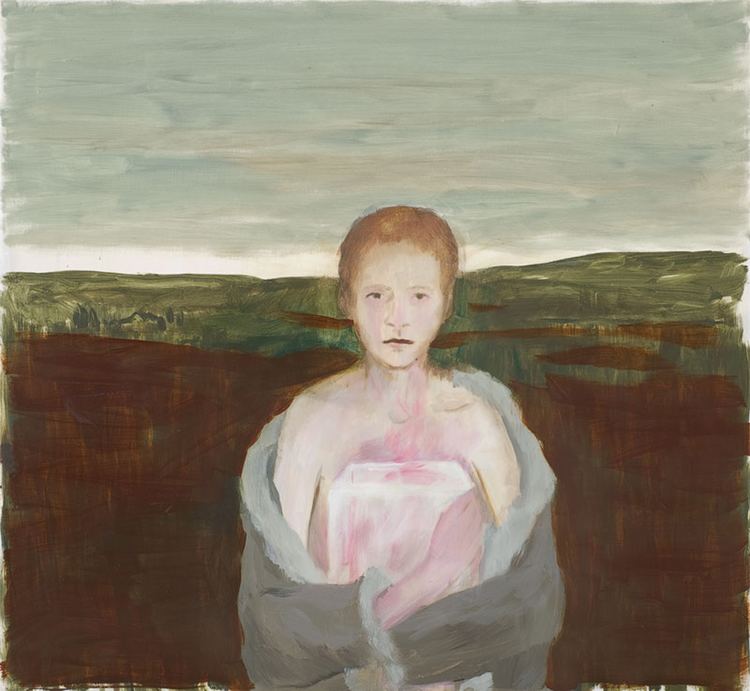 | ||
Books The Blog: Bad Time for Poetry, Enrique Martinez Celaya, On Art and Mindfulness, An Unfinished Conversa, Cowboy Junkies [musical Similar People Joseph Beuys, Leon Golub, Ludwig Wittgenstein, Herman Melville | ||
el c rculo de enrique martinez celaya
Enrique Martínez Celaya (born June 9, 1964) is a contemporary artist who works in painting, sculpture, photography, poetry, and prose, presented in contexts he often refers to as "cycles" or "environments." His artistic work examines the complexities and mysteries of individual experience, particularly in its relation to nature and time, and explores the question of authenticity revealed in the relationships and tensions between personal imperatives, social conditions, and universal circumstances. These examinations often result in comprehensive projects addressing memory, familiarity, attachment, love, death, and longing.
Contents
- el c rculo de enrique martinez celaya
- CGU Stories Enrique Martnez Celaya
- Early life and education
- Work and selected exhibitions
- Awards
- Teaching
- Writing
- Whale and Star Press
- Personal life
- References
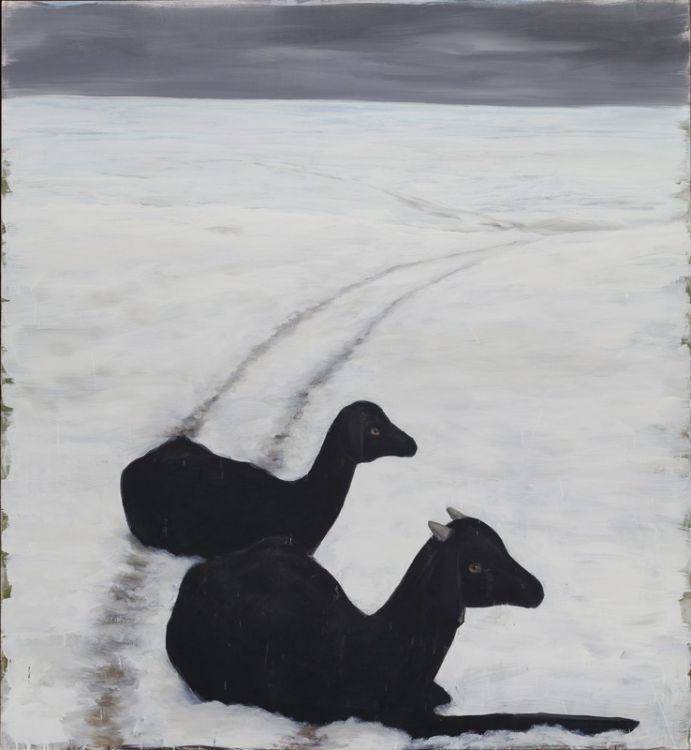
Although his thinking is influenced by literature and philosophy, his work regards the subjective experience and practical responsibilities of everyday life rather than follows trends in cultural practices and critical theory. His work has been the subject of several monographic publications including Enrique Martínez Celaya, 1992-2000 (Wienand Verlag: Cologne, 2001), Enrique Martínez Celaya: Working Methods(Ediciones Polígrafa: Barcelona, 2013) and Martínez Celaya: Work and Documents 1990-2015 (Radius Books: Santa Fe, 2016).

CGU Stories: Enrique Martínez Celaya
Early life and education
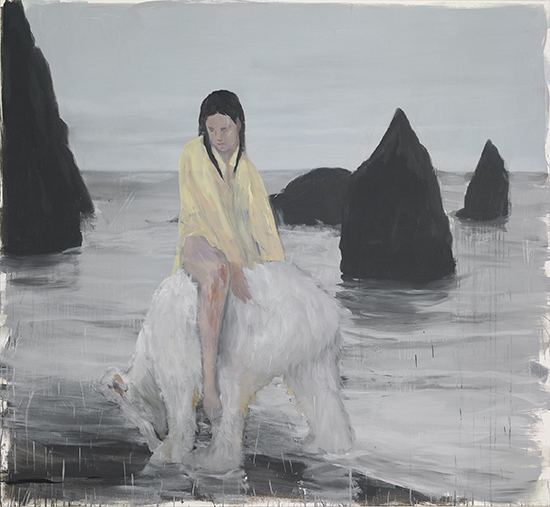
Martínez Celaya was born on June 9, 1964, in Palos, Nueva Paz, Cuba. The family relocated to Madrid, Spain in 1972, and he took up drawing at the age of eight. "In Spain I became familiar with not belonging somewhere. That was a feeling I had not known before." In 1975, the family relocated again, this time to Puerto Rico. In Puerto Rico from age 11, he had been apprenticed to Bart Mayol. "To see his [Mayol's] love for the work," Martínez Celaya recalled, "was the greatest lesson I learned during my time with him." In a 2012 interview with the scientist Leo A. Harrington and novelist Mary Rakow, Martínez Celaya observed, "As a kid I painted and drew to make sense of life, and I never outgrew that approach."
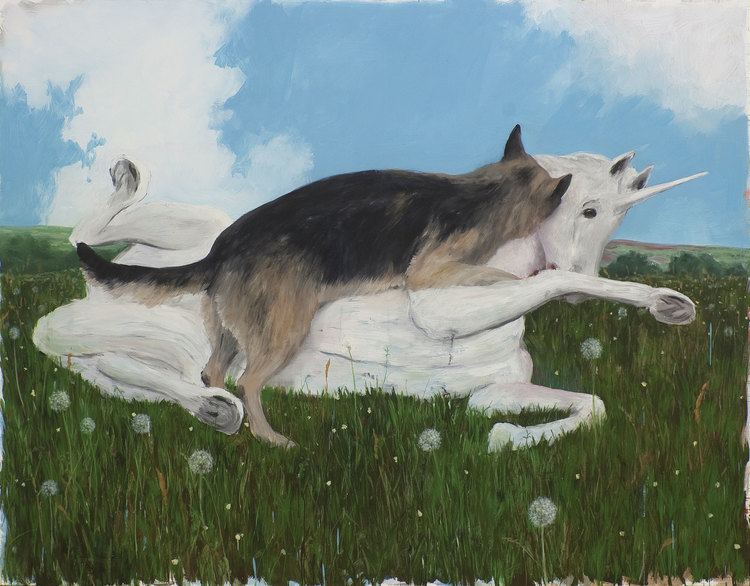
Martínez Celaya moved to upstate New York in 1982 to study applied physics and electrical engineering at Cornell University. He graduated magna cum laude with a B.S. in 1986. He later attended the University of California, Berkeley, where he enrolled in the quantum electronics Ph.D. program. He worked at Brookhaven National Laboratory, patented four laser inventions, and earned his M.S. at Berkeley in 1989, but he left the university prior to earning his Ph.D. to pursue art.
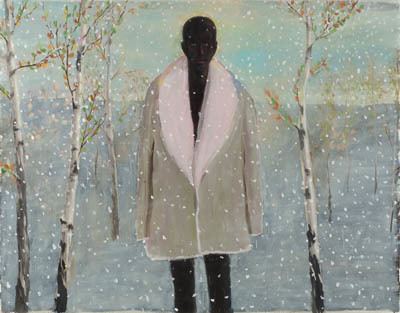
Martínez Celaya enrolled at the University of California, Santa Barbara and graduated with a M.F.A. in 1994 with highest honors. After graduation, he attended the Skowhegan School of Painting and Sculpture in Maine.
Work and selected exhibitions

In a 2014 interview with Saul Ostrow, Martínez Celaya observed, "So it might be that what binds my work together is not a look or even a body of knowledge but rather the insistence the work must shine a light on the choices I’m making. In that sense, the central preoccupation of my work is the same that animated my first drawings as a kid: What is this life and how do I make sense of it?"
Martínez Celaya uses familiar and accessible images such as a boy, a girl, a unicorn, birds, deer, a dog, a sunrise or a seascape pursue a deeper order of experience that lies beneath appearances and beyond our intellectual grasp that resembles moments of childhood astonishment and wonder at the world’s radiance. His work draws from the prose of Jorge Luis Borges, Herman Melville, and Lev Tolstoy; the poetry of Paul Celan, Osip Mandelstam, Harry Martinson, and José Saramago; the philosophy of Schopenhauer, Martin Heidegger, Hegel, and Ludwig Wittgenstein; the paintings of Velasquez, Caspar David Friedrich, and Ferdinand Hodler; Kurt Schwitters's Hanover Merzbau; the social practice of Joseph Beuys and Paulo Freire; the films of Andrei Tarkovsky; and the music of Bach. About his interest in literature, Martínez Celaya states, “Reading is a primary source for my work." I read philosophy and literature and that is the universe I see my work in, even though I’m a visual artist. ... Often when artists talk about writers, they’re talking about them as source of content. I’m reading them for a moral stance in the world.”
The Gypsy Camp, Jack Shainman Gallery, New York (2017): This exhibition features seventeen paintings that explores cycles of ambition, loss, redemption, and the nature of painting. Although nature is a persistent theme throughout this body of work, the juxtaposition of disparate references, like roses and rebar, resists identification with any specific narrative, thus undermining the capacity of painting to offer a unified and stable meaning. Martínez Celaya observes, "The conviction of the scenes is put in question by the way the paint doesn’t reach the edges. This quality of the edges also problematizes the ‘framing’ of the world suggested by the paintings—my paintings are not windows to a world but all that there is.”
Enrique Martínez Celaya: Small Paintings 1974-2015, Abroms-Engel Institute for the Visual Arts, University of Alabama-Birmingham (2016): This exhibition offers a survey of over forty-five small-scale paintings that reveals the import role that these intimate paintings have played in the artist's creative development for over five decades.
Empires Sea & Empires Land, Jack Shainman Gallery, New York (2015): This two-part exhibition was on view simultaneously in two separate gallery spaces, consisting of paintings, sculptures, and drawings that explore the emotional complexities of desire, aspiration, discontent, and hope that drive decisions and inspire actions in the world. Martínez Celaya observes, "empires are made of dreams so there is a good possibility that in the final account—if such an account were to be available—they are nothing but the reflections of our vanity. The tendency, however, is to postpone that recognitions. Empires are always of tomorrow."
Lonestar, L.A. Louver, Venice, California (2015): Spanning the entire two-floors of the gallery, this exhibition begins with an installation featuring a boy in a pool of water flanked by mirrors and ends with a boy in a house-shaped birdcage, with five live birds. About the exhibition, Martínez Celaya writes, "The paintings and sculpture we find between those two rooms make a possible trajectory of the boy and point to a world familiar and unknown, radiant and brutal, personal and vast" (from journal blog post, "Lonestar II," March 5, 2015).
Enrique Martínez Celaya: Burning as It Were a Lamp, Hood Museum of Art, Dartmouth College (July 12-August 10, 2014): Presented on the occasion of Martínez Celaya's residence as Dartmouth College Montgomery Fellow, the components of the exhibition are relatively simple: a painting, three walls covered with mirrors, and a bronze boy standing in a pool of his own tears. But this simplicity opens onto the complexity of personal identity. In a journal blog post on the artist's website, Martínez Celaya writes, "The environment places the duality of self and reflection at the center of a visual, literary and philosophical web of relationships that tries to represent—to catch—the irrepresentable" ("Burning as it were a Lamp," November 4, 2013).
The Seaman's Crop, Parafin, London (2014): This exhibition of paintings and sculptures explores the emotional complexities of the journey through the recurring image of the suitcase. "The world suggested by this cycle of work," suggests the artist in a journal blog-post entry dated August 24, 2014, "is a radiant world grounded in experience, richer than what we can capture with our senses, and secret but without too many metaphysical, social, cultural, or cynical overlays."
A Wasted Journey, A Half-Finished Blaze, Galleri Andersson/Sandström, Umeå, Sweden (2014): The exhibition consists of a reconceptualization of the sculpture that Martínez Celaya created for SITE Santa Fe: a bronze boy encrusted with large jewels crying onto a bed of pine needles. In a journal blog post, Martínez Celaya writes that this exhibition, "continues my exploration of ideas I have been pursuing in the last decade: memory, suffering, longing for radiance, loneliness, the revelation of choices in the work of art, and the possibility of art to be relevant to life" ("A Wasted Journey, A Half-Finished Blaze," January 15, 2014).
The Pearl, SITE Santa Fe, Santa Fe, New Mexico, (2013): This immersive environment in the gallery's 15000 square feet includes painting, sculpture, video, photography, waterwork, sound, and writing, as well as the artist's first musical arrangement. Citing aspects of the domestic as well as of the epic, of the small arcs of individual histories as well as the big arc of time, the environment unearths memories seemingly left behind, and through this unearthing intimates there are secrets inherent in everything, particularly the familiar.
Roadhome, Galleri Andersson/Sandström, Umeå, Sweden (2012): The exhibition of twelve works explores a concept that emerges through Swedish writer Harry Martinson's novel, The Road, which Martínez Celaya in his catalogue introduction calls "Roadhome: the making of a home of the journey, not because of some enlightened notion of journey as destination, but because the road reveals the stranger in oneself and once revealed it is only there, in that strangeness, that one can be true—or at the least, semi-true."
The Crossing, The Cathedral Church of Saint John the Divine, New York (2010): This series of four monumental paintings, made especially for and in response to the nave of the cathedral, tests art's metaphysical and ethical potential in a context in which viewers are in search for guidance, spiritual strength, peace, or hope.
Daybreak, L.A. Louver, Venice, California (2009): The environment consists of thirteen paintings and two sculptures that use the relationship of the solitary human figure to the vast and stark landscape to reflect on the nature and structure of experience, recollection, and aspiration.
Nomad, Miami Art Museum, Miami, Florida (2007): The exhibition consisted of five large-scale, oil-and-wax paintings, which explore issues of exile and rootlessness through the seasons. Inspired by the works of Swedish poet and Nobel Prize laureate Harry Martinson, the paintings evoke a dream-like state of suspension in which the exile lives: time passes and yet nothing changes.
Coming Home, the Sheldon Museum of Art, University of Nebraska-Lincoln (2006): A re-installation and re-interpretation of Coming Home (2000), this sculptural group that consists of a boy and a gigantic deer. It was donated to the museum by well-known German collector Dieter Rosenkranz in honor of the University of Nebraska's commitment to Martínez Celaya's work. The sculpture group was presented within an ambitious photographic environment.
Schneebett, Berliner Philharmonie in Berlin, Germany (2004): The final stage in the artist’s Beethoven cycle, this large-scale installation uses Beethoven's deathbed as a means to reflect on the integrity of life decisions in confrontation with the finality of death. The project also included performances by the orchestra and a public lecture sponsored by the American Academy in Berlin. The installation was recreated as the inaugural exhibition for the Rosenkranz Kubus at the Museum der bildenden Künste Leipzig, Germany (2006). With its focus on human frailty, it served as a counterpoint to Max Klinger's sculpture of Beethoven as a nationalist hero which is on view nearby.
Enrique Martinez Celaya is represented in Europe by Galeria Joan Prats (Barcelona) and Galleri Andersson/Sandström (Stockholm); in the United Kingdom by Parafin (London); in Italy by Louise Alexander Gallery (Porto Cervo) and in the United States by L.A. Louver (Venice, California), John Berggruen Gallery (San Francisco), and Jack Shainman (New York).
Awards
Martínez Celaya was awarded the Brookhaven National Laboratory Fellowship (1986–1988), and was Interdisciplinary Humanities Fellow and Regents Fellow from the University of California (1992–94). He received Los Angeles County Museum of Art's Art Here and Now Award (1998), the Hirsch Grant (2002), the Rosa Blanca Award from the Cuban Community (2002), and the California Community Foundation Fellowship, Getty Foundation Award (2004). He was honored with the Inaugural Colorado Contemporary Arts Collaborative Artist Residency at the CU Art Museum, sponsored by Kent and Vicki Logan (2004). He also received the Anderson Ranch Arts Center National Artist Award (2007). Recent awards include the Knight Foundation Grant (2013), and he was named Montgomery Fellow, Dartmouth College (2014), as well as the Cecil and Ida Green Honors Chair, Texas Christian University (2014).
Teaching
In 1994, Martínez Celaya was appointed assistant professor of art at Pomona College and the Claremont Graduate University, where he taught until 2003, when he resigned his tenured position of associate professor. He continues to be a popular and influential teacher throughout the country. He is currently a faculty member and board member at the well-known Anderson Ranch Arts Center, Snowmass Village, Colorado. He was also appointed Visiting Presidential Professor at the University of Nebraska (2007–2010), where he developed interdisciplinary conversations between artistic, religious, scientific, philosophical, and literary practice. In addition to these appointments, Martínez Celaya has lectured at the School of the Art Institute of Chicago, the Aspen Institute, Joslyn Museum of Art (Omaha, Nebraska), Miami Art Museum, Denver Art Museum, Hope Center (Richmond, Virginia), and the Berliner Philharmonie and the American Academy in Berlin, among many other art departments, institutes, and organizations internationally. He served as the Roth Distinguished Visiting Scholar at Dartmouth College, Hanover, New Hampshire.[1] (2016-17). More recently, he was appointed the first Provost Professor of Humanities and Arts at the University of Southern California in Los Angeles.
Writing
In addition to teaching and lecturing, writing—poetry as well as prose—has played an important role in Martínez Celaya's artistic practice. In an interview with Saul Ostrow in 2014 Martínez Celaya observed, "The work always begins with writing. I write not to find content but to sort out where I am standing, so that by the time I get to draw or paint, I have an understanding of the conceptual and emotional relation I have, or I am seeking, with the work." He has published a collection of poetry, October (Cinubia, 2001) and fiction, Guide (2001). He writes a popular blog on his website, a selection of entries has been published as The Blog: Bad Time for Poetry (Whale & Star, 2010). The University of Nebraska Press published a twenty-year survey of his writings in 2011, entitled ''Collected Writings and Interviews, 1990-2010; and Martínez Celaya published a selection of lecture notes from his popular workshops, entitled On Art and Mindfulness (Whale & Star, 2015), in collaboration with the Anderson Ranch Art Center in Snowmass, Colorado.
Whale and Star Press
As an extension of his commitment to the importance of literature and to the education and formation of artists, Martínez Celaya founded Whale and Star in 1998, an imprint that specializes in art and its relationship to other intellectual and creative fields, especially literature, philosophy, and critical theory. The University of Nebraska Press serves as Whale and Star's primary distributor. Among its titles are Joseph Beuys: Multiples and Other Forms of Politics (2001); Selections from Charles Baudelaire's Les Fleurs du Mal (2001); Martínez Celaya: Early Work (2007); XX: Cowboy Junkies (2007); Modernist Archaist: Selected Poems of Osip Mandelstam (2008); Intimations: Selected Poems by Anna Akhmatova (2009); Enrique Martínez Celaya, The Blog: Bad Time for Poetry (2010); and Joy Goswami: Selected Poems (2014).
Martínez Celaya also created the watercolors for a children's book, The Return of the Storks, written by Lorie Karnath and published through Akira Ikeda Gallery in Berlin.
Personal life
As of November 2009, Martínez Celaya has three children, Gabriela, Sebastian, and Adrian Marcos, with wife, Alexandra. As of April 2015, Martínez Celaya is based in Los Angeles, California.
